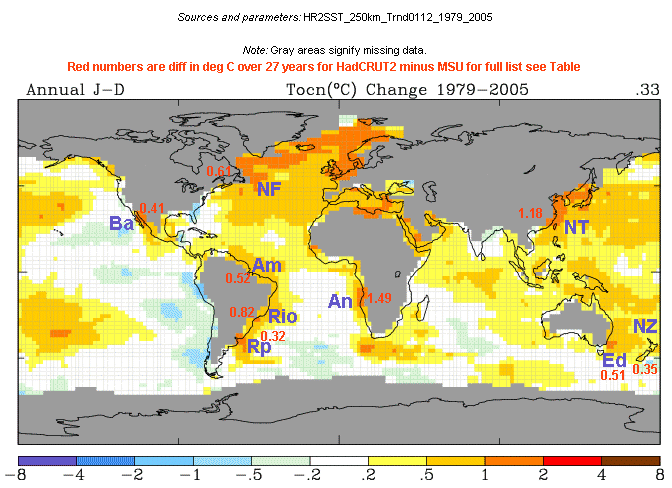
| Region |
Lat |
Long |
MSU |
HadCRUT2 |
SST-MSU 79-05
deg C |
| NF |
45-50N |
45-50W |
0.035537 |
0.058120 |
0.61 |
| NF |
50-55N |
45-50W | 0.034914 |
0.04822 |
0.36 |
| NF (incl land) |
45-50N | 50-55W |
0.038062 |
0.033468 |
-0.12 |
| Ba |
25-30N |
110-115W |
0.014105 |
0.029212 |
0.41 |
| NT |
25-30N |
120-125E |
0.009356 |
0.053243 |
1.18 |
| NT (west) |
25-30N |
125-130E |
0.000983 |
0.029731 |
0.77 |
| Am |
0-5N |
45-50W |
0.005723 |
0.024945 |
0.52 |
| An (incl land) |
10-15S |
10-15E |
0.004546 |
0.059928 |
1.49 |
| Rio |
20-25S |
35-40W |
0.005339 | 0.0358 |
0.82 |
| Rp |
35-40S |
50-55W |
0.011944 |
0.023956 |
0.32 |
| Rp east (incl land) |
35-40S |
55-60W |
0.0101 |
-0.009 |
-0.03 |
| Ed |
35-40S |
150-155E |
0.004198 |
0.022979 |
0.51 |
| NZ (area incl most NZ
land) |
35-45S |
170-180E |
0.010588 |
0.023471 |
0.35 |